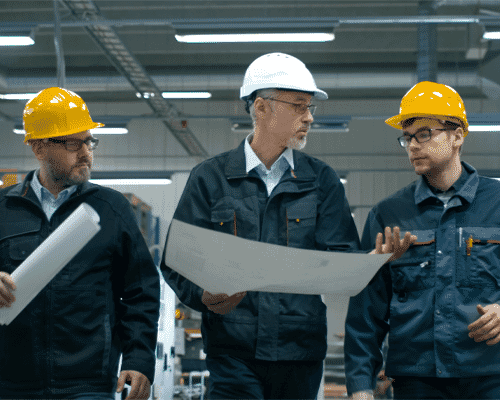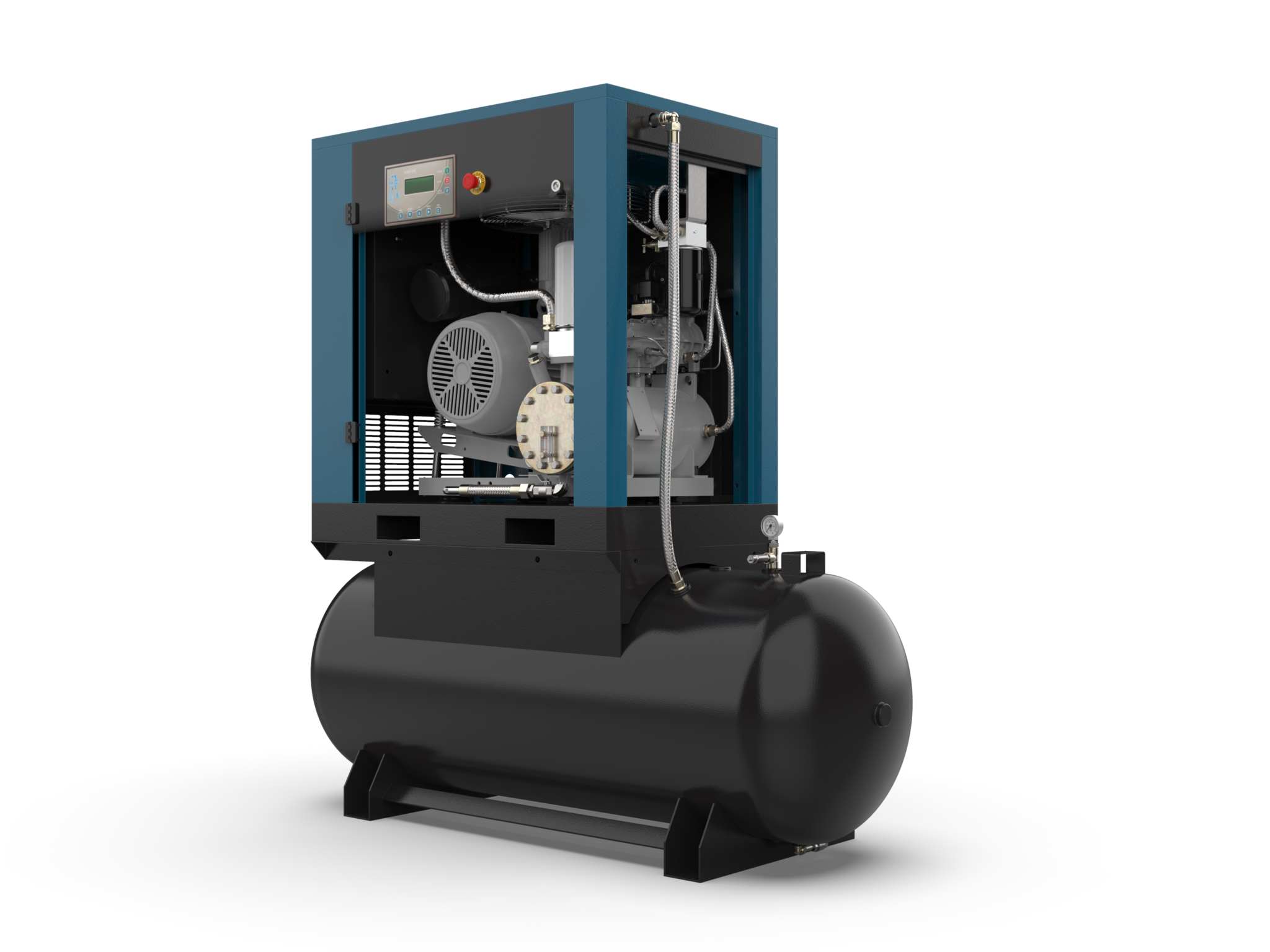
How an Air Compressor Audit Can Reduce Operating Costs
August 30, 2023
What Type of Commercial Air Compressor Does an Auto Shop Need?
September 13, 2023How to Pick the Right Air Compressor for Your Dry Cleaning Business
Kaishan USA | September 6, 2023 | Uncategorized

Dry cleaning operations use a variety of pneumatic tools, all driven by compressed air. These spotting gun spray solvent on garments to remove stains.
Compressed air plays a significant role in the dry cleaning industry, powering the compressed air that removes dirt and debris from clothes before they are immersed in the solvent.
It helps spray the solvent onto clothes. It controls a host of different pneumatic equipment used during the process, including brushes and spotting guns, helping to break up water molecules and remove them from the clothing. And it powers functions like steam cleaning, drying and pressing the clothes.
In short, compressed air enables careful handling of delicate fabrics, effective stain removal and efficient cleaning and drying.
Generating all that compressed air consumes a lot of energy, a fact the industry has long recognized. In 2013, for example, American Drycleaner termed dry cleaning “an energy-intensive operation” and even earlier noted that 76% of dry cleaning operators believe energy efficiency is very important to their plant’s bottom line.

Different dry cleaning operations like steaming and pressing have one thing in common—they consume energy.
Energy Use
Since electrical costs make up 76% of an air compressor’s total cost of ownership, according to the U.S. Department of Energy, energy consumption is a major factor in the long-term success of a dry cleaning operation.
What you pay your local utility will dwarf initial cost and maintenance over the lifecycle of your compressed air system. So, buying an air compressor on price alone is not a good business decision. It makes much more sense to consider the energy efficiency of the unit you plan to buy and make your purchase decision more on energy usage than its price tag.

Steaming equipment powered by compressed air helps dry cleaners deliver the wrinkle-free clothing their customers want.
In effect, choosing the right air compressor could help build competitive advantage for the smart businessperson. Let’s start by considering the different types of air compressors.
The Best Air Compressor for Dry Cleaning Operations
There are several different types of air compressors you could select for your dry cleaning establishment:
-
- A centrifugal air compressor is most cost-effective for high-volume applications (above 2,500 CFM). However most dry cleaning operations do not need that much volume.
- A reciprocating compressor is the best choice for low-volume applications (less than 20 CFM). They are inexpensive, but noisy. And they have a short duty cycle. They typically run about 30 minutes in an hour. Run a recip longer, and you risk damaging your compressor and shortening its life. As a result, to properly size a recip, you need to buy a compressor with a larger horsepower rating and add a storage tank to give the pump time to cool down.
- Most industrial air compressors these days are rotary screw air compressors, so named because they have two large rotors that rotate inside a concealed chamber. Rotary screw machines are remarkable for their ability to provide steady streams of high-quality compressed air and handle large-capacity loads. They have become the air compressors of choice for most industrial applications because of their reliability, efficiency and long life.
Kaishan has several different models used in dry cleaning operations, including our KRSB belt-drive and KRSD single-stage air compressors. Plus, Kaishan oversizes the coolers in its units, enabling them to handle the heat and humidity you’ll often find in an industrial-level dry cleaning operation (as noted by insurance consultants, HVAC companies and industry publications). We design most of our units to withstand temperatures as high as 122°F, while many of our competitors list 104° to 115°F as their maximum temperatures.

Because of their reliability, efficiency and long life, air compressors like Kaishan’s KRSB belt-drive rotary screw compressors are an excellent choice for dry cleaning shops. They are available as tank mounts with dryers.
Some air compressor companies will recommend that dry cleaning companies buy oil-free compressors to ensure the air is of the highest quality.
Oil-free vs. Oil-lubricated
Advocates often pressure dry cleaners to use oil-free compressors, raising the possibility of oil contamination. They claim that oil-free models provide better air quality and don’t need the air purification equipment installed in oil-lubricated compressors.
But they fail to mention some significant downsides to the use of oil-free compressors:
-
- There’s still oil. While oil-free machines do not introduce oil, they still use atmospheric air, which contains water vapor, dirt, microorganisms, rust and pipe scale, among other things. As a result, you still need filters to remove them.
- Temperature. Oil-free compressors produce air that is hot and moisture-laden. The air must be treated before it is distributed through your compressed air system.
- Energy use. Oil-free compressors are less efficient than oil-lubricated compressors, adding to your operating costs.
- Initial cost. New oil-free compressors cost $400-500 per horsepower, significantly more than oil-lubricated compressors at $250-300/hp.
- Maintenance. Oil-free compressors require expensive overhauls or airend replacements every few years, while oil-lubricated models only need an oil change and replacement of the air-oil separator annually.
- Warranties. Because of their greater reliability, manufacturers offer attractive warranties on oil-lubricated equipment.
- Total cost of ownership. Perhaps the primary factor. When you add the acquisition cost, the increased energy cost and the need for expensive maintenance, air cooling and treatment make oil-lubricated compressors much more cost-effective.
We have found that using a one-micron coalescing filter will allow an oil-lubricated rotary screw compressor to produce air with negligible oil content—less than one part per million—and at a significantly lower initial cost. As a result, most dry cleaners rely on oil-lubricated rotary screw compressors
Rather than focus on oil-free machines, we recommend that dry cleaners focus on lowering operating costs and total cost of ownership by maintaining their systems.
With Compressed Air, Cleanliness Is Next to Godliness
A cubic foot of air can contain millions of dirt particles, water and oil. If you filter out these impurities, you can prevent contamination and premature wear, helping to ensure smooth, trouble-free operation of components like valves and cylinders. This process reduces maintenance costs, downtime and energy consumption.
The critical consideration for maintenance is filters. Clogged filters will impede and eventually block airflow, causing energy loss that is both unnecessary and avoidable. As a result, we recommend:
-
- Regular cleaning of intake vents
- Checking and cleaning inlet air filters
- Inspecting and cleaning your heat exchangers based on your environment
How often? A lot depends on the quality of the supply air and the environmental conditions. Plus, how many hours you operate your system. But we encourage customers to replace the filter elements weekly to monthly.
Another essential element in the maintenance process is preventing leaks.
Leak Prevention
Poorly designed and maintained compressed air systems waste up to $3.2 billion in utility payments in the U.S. annually, according to the Compressed Air & Gas Institute (CAGI).
The average system loses between 30% and 50% of its volume to air compressor leaks, with poorly maintained systems running as high as 80%.

The majority of leaks in compressed air systems occur in the last few feet before applications like this ironing station in a dry cleaning operation.
CAGI further estimates that a quarter-inch leak in a 100 psi system will cost $17,000 annually, updating figures with current utility rates.
The good news is that some leaks are easy to locate because they emit a notorious, hard-to-ignore hissing sound.
The bad news is that most don’t make any sound at all. In fact, 80% are inaudible. To find those leaks, you’ll probably want to get help from your air compressor professional. Kaishan works with a nationwide network of independent distributors, who are skilled in using leak-detection technology and can help you develop a leak detection and prevention program.
Occasionally, you’ll want to do a more thorough check of your air compressor system, especially clearing drains and sumps, to ensure that things are working properly and that you’re doing the right maintenance to extend its life for as long as possible. Your air compressor consultant can help with that as well.
A System Designed for Your Application
There’s no one-size-fits-all system design tailored specifically to dry cleaning because every operation is different, using its own special brew of chemical processes, piping systems, dryers, storage and so on. That’s why you will benefit most from a system designed and installed to meet your specific needs.

Every dry cleaning operation uses a unique combination of equipment, solvents and processes. Your system should be designed and installed to meet your specific needs.
An Ideal Installation
In a perfect world, your air compressor would be installed in a clean, dust-free, dry and oil-free area above ground. The site should be cool and well-ventilated.
There should be good lighting, and it should be spacious enough to allow your maintenance people good access to the equipment. The compressor would rest on a concrete floor that is flat and level and can handle the weight.
Locating the unit centrally, as closely as possible to the application it’s intended to service, reduces the amount of piping required. It also eliminates many leaks and pressure drops that sometimes occur in long piping runs.
Because an air compressor runs hot, it should not be in the same room as any device, like a boiler, that also generates heat. The room should have a maximum ambient temperature of 122°F. Keeping the temperature 100°F, if at all possible, helps the compressed air dryer.
Finally, the layout of the compressed air piping in your plant can significantly impact your system's operation. A poor design will increase energy costs, equipment failure, production losses and maintenance. Meanwhile, investing in a well-crafted layout will have substantial payback over the life of the system.
Considering an Industrial Air Compressor
Trading up to a larger industrial air compressor is a significant step in the life of any dry cleaning business for good reason. It represents a major investment, a commitment of working capital, training time and management effort to purchase and install a new piece of equipment. Not to mention the ramp-up time for your team to adjust to the new device.
But the benefits of purchasing greater compressor air capacity are significant. Done correctly, you’ll get more power. Greater reliability. Reduced electricity costs. Higher quality air. A safer, more comfortable environment. And greater peace of mind.
Conversely, failing to make that investment could slow you down. Hamper your growth. Give you declining performance from critical tools.
Whether you’re expanding, adding a new shift, renovating, moving or adding more powerful tools, you should consider upgrading to an industrial air compressor. We can help.
Key Takeaways
-
- Compressed air is critical to dry cleaning
- The choices you make could help you develop competitive advantage
- Air compressors do not have to be oil-free
- But compressors do have to be well maintained
- Best results come when your compressed air system is designed and installed for your operation
Let Us Help
Designing an air compressor system for your dry cleaning operation is critical to your success. If you need help choosing the right compressor, get in touch with the experts at Kaishan. Contact us today.
Random stat or
customer quote
textXXtext
text
Compressed air plays a significant role in the dry cleaning industry, powering the compressed air that removes dirt and debris from clothes before they are immersed in the solvent.

